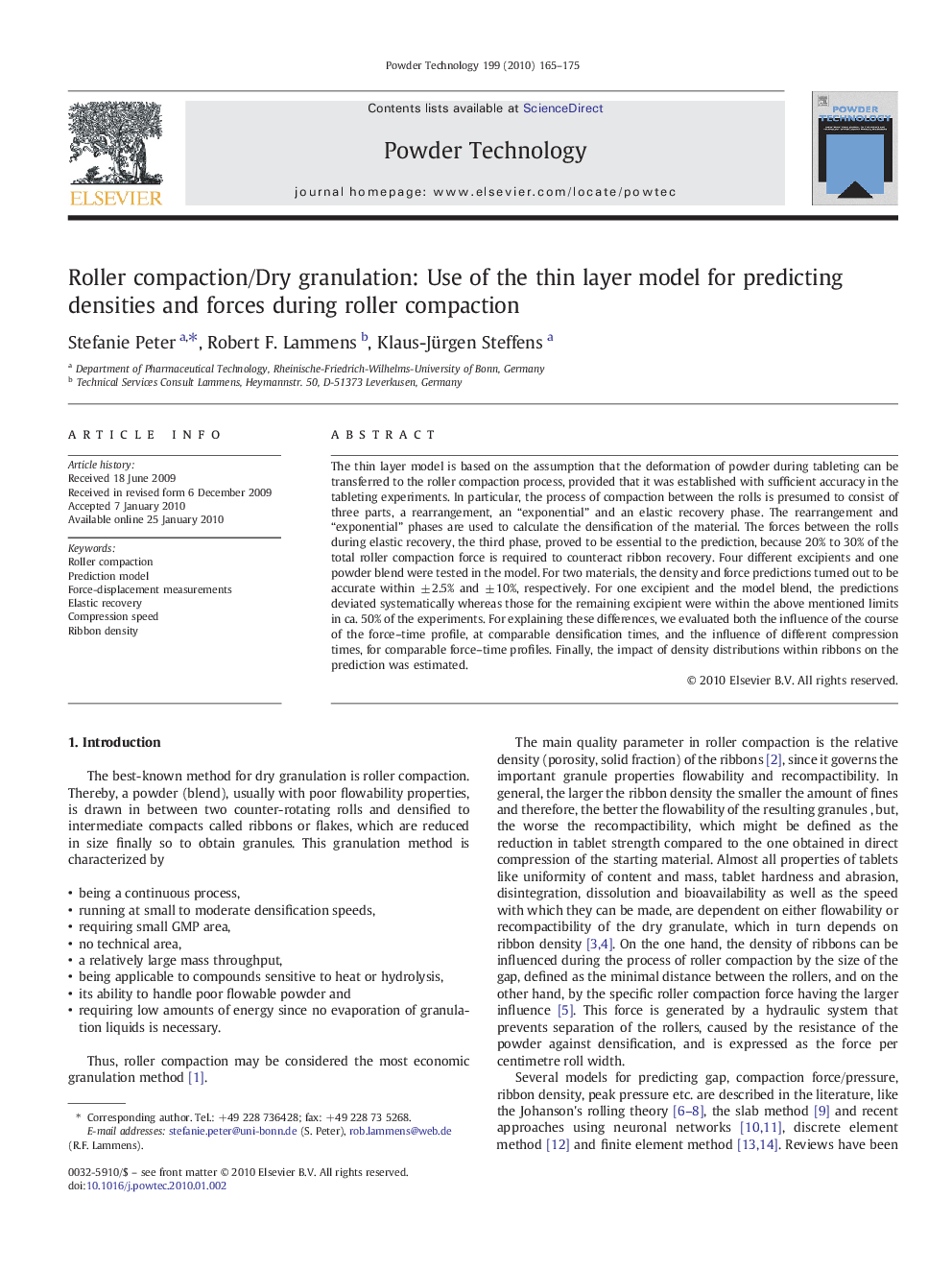| کد مقاله | کد نشریه | سال انتشار | مقاله انگلیسی | نسخه تمام متن |
|---|---|---|---|---|
| 238205 | 465746 | 2010 | 11 صفحه PDF | دانلود رایگان |

The thin layer model is based on the assumption that the deformation of powder during tableting can be transferred to the roller compaction process, provided that it was established with sufficient accuracy in the tableting experiments. In particular, the process of compaction between the rolls is presumed to consist of three parts, a rearrangement, an “exponential” and an elastic recovery phase. The rearrangement and “exponential” phases are used to calculate the densification of the material. The forces between the rolls during elastic recovery, the third phase, proved to be essential to the prediction, because 20% to 30% of the total roller compaction force is required to counteract ribbon recovery. Four different excipients and one powder blend were tested in the model. For two materials, the density and force predictions turned out to be accurate within ± 2.5% and ± 10%, respectively. For one excipient and the model blend, the predictions deviated systematically whereas those for the remaining excipient were within the above mentioned limits in ca. 50% of the experiments. For explaining these differences, we evaluated both the influence of the course of the force–time profile, at comparable densification times, and the influence of different compression times, for comparable force–time profiles. Finally, the impact of density distributions within ribbons on the prediction was estimated.
The thin layer model is based on the assumption that the deformation of powder during tableting can be transferred to the roller compaction process. The validity of this simple model will be investigated with respect to predicting ribbon densities as a function of roll compaction forces (and vice versa) for different excipients and for a model powder blend.Figure optionsDownload as PowerPoint slide
Journal: Powder Technology - Volume 199, Issue 2, 23 April 2010, Pages 165–175